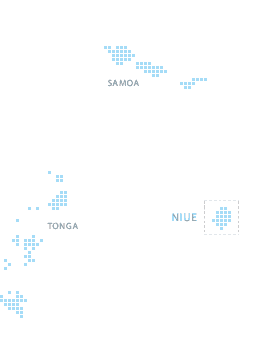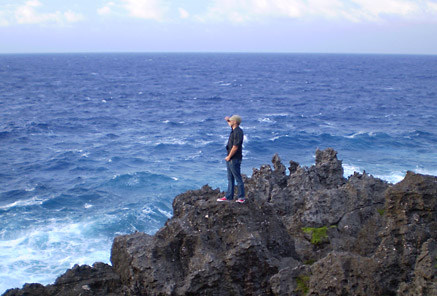Niue Water Loss Management, Sectorisation, Metering and Logging

|
||||||||

Niue has one of the most pro-active water utilities in the South Pacific and therefore enjoys the full potential of assistance through the WDM and related water programs implemented by SOPAC and its partners. Based upon the needs detailed by the Manager of the Water Division, Mr Andre Siohane, a comprehensive WDM program has been developed in Niue.
In partnership with Wide Bay Water Corporation, new bulk flow meters and flow and pressure loggers have been installed at all 21 supply points throughout the Island. A laptop containing the software needed to install, download and analyse logger data and produce water loss management plans has been provided. Equipment for leak detection and pipe location have been supplied together with the necessary training of the team. Tailor made training was provided in sectorisation, minimum night flow determination and analysis of pressure and flow data. Continued technical support is provided by SOPAC and Wide By Water Corporation via email in order to ensure the sustainability of this effort in Niue.
The Water Division now enjoys close to 100% knowledge about where the reticulated water is going and by comparing the performance of each sector, priorities can be made on where and what kind of intervention needs to take place in order to minimise water losses and save pumping costs.
Update!
As of late 2009, pilot household meters are being installed in Niue – the final recommendation in the draft Niue System Loss Management Plant (SLMP). This will enable a concrete assessment of household consumption for the first time. The Niue SLMP will be finalised – further reducing water loss and increasing system efficiency.
Niue water loss management best practices will also be documented for inclusion in a regional knowledge sharing resource to be used by other utilities.
Niue water loss management best practices will also be documented for inclusion in a regional knowledge sharing resource to be used by other utilities.


















